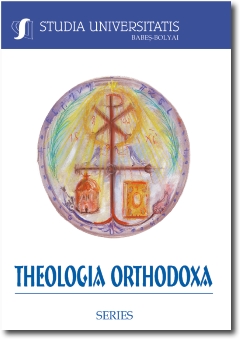Author(s): Alexandru Simon / Language(s): Romanian
Issue: 1/2010
Turk’s Churches: The Walachians of Spadounes and the Genesis of the
Walachian and Moldavian Mitropolitans. In the early 1500s, (Venice and) Theodore Spandounes, a
Cantacuzenoi, on his mother’s side, in the intelligence service of the Venetian republic,
blamed the Serbians and the Walachians for allowing the Turk to commence his European
expansion. Stephen Dushan of Serbia and Nicholas Alexander and Walachia, his vassal, the
enemies of John V Palaeologus, had formed an alliance with the Ottoman emir Orkhan, who
thus set foot in Europe. Although the Ottoman conquest of Galipoli (1354) was not a real
watershed and although few sources on Walachian politics in the 1300s have been preserved, the
matter is rather eloquent. First, it helps indicate the radical change occurred in Walachian
politics after Louis I of Anjou, king of Hungary, successfully blocked the anti-Tartar ‘crusader
correspondence’ between Clement V and Nicholas Alexander (Louis apparently also managed
to severely hinder anti-Ottoman communication between Dushan and Innocent VI). Second,
the foundation of metropolitanate of Walachia (late 1353-late 1354) was a result of the
entente between Nicholas Alexander and the pro-Ottoman party of John VI Cantacuzenos
and patriarch Philotheos Kokkinos (back on the throne, but also indebted to the Ottoman
Turks, John V, alongside the new patriarch Callixtus I, confirmed the deal in 1359). Thirdly, it
points to the rather common perception of Walachians as traitors of the cross and to the
often overlooked fact that namely until 1453 politics north of the Lower Danube (a real
Christian front line only from the 1390s on) were predominantly pro-Ottoman in effect. In
similar fashion and with cause, Krakow’s later direct or indirect, behind the front line, Ottoman
acts were held responsible for facilitating Ottoman expansion in the 1400s. The Polish involvement
in Moldavian affairs (Moldavia was her vassal since 1387), alongside the significantly more
effective relation between the Genoese colonies and the Ottoman power, led to the conclusion
of the treaty between Bayezid I and Peter I of Moldavia (c. 1390). This treaty then turned
against the ecclesiastical interests of the recently (re-) established (Greek rite from 1387-1389 on)
state of Moldavia, when in 1391-1392 and especially after 1393, Manuel II Paleologus turned
against his former Ottoman suzerain.
More...

